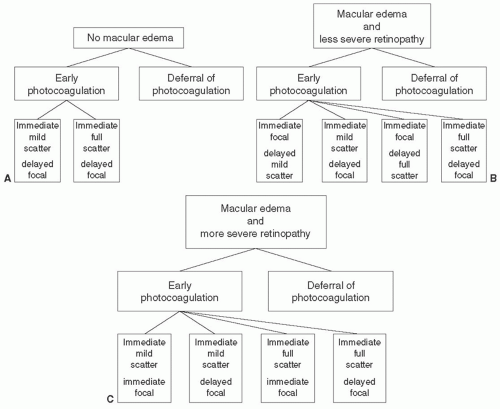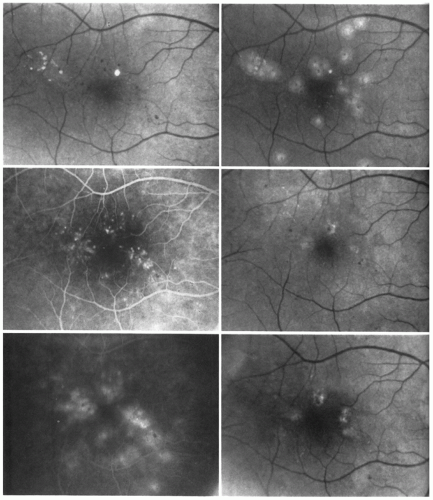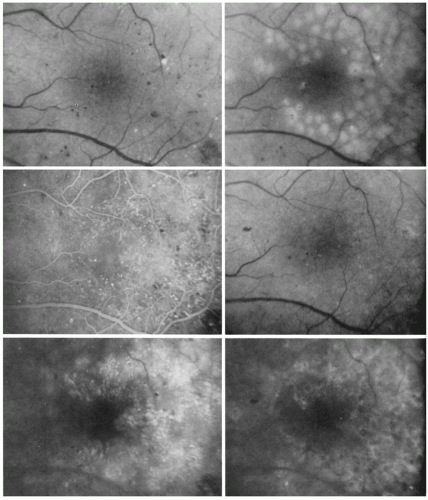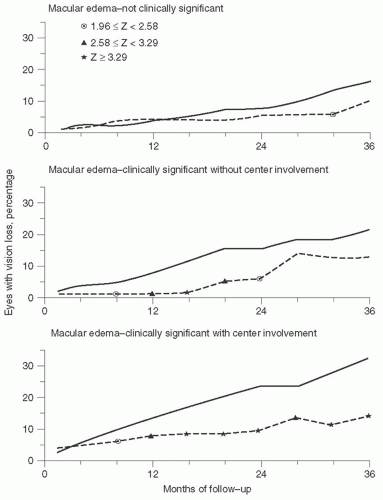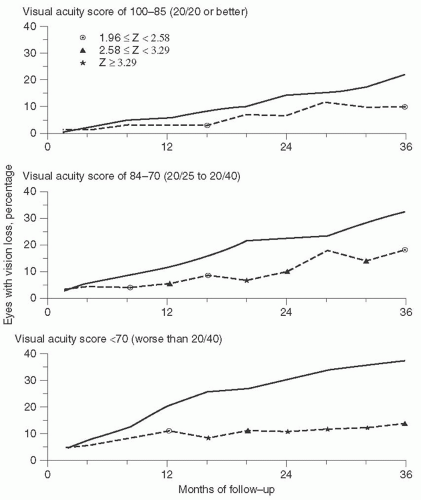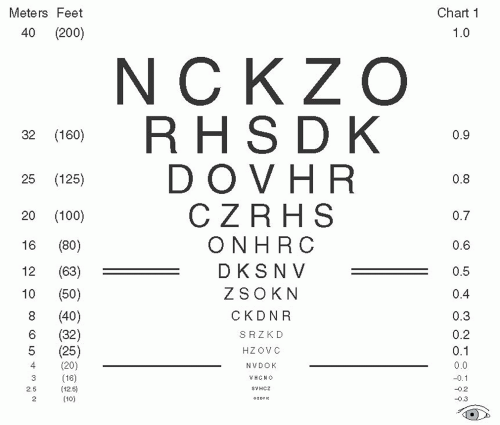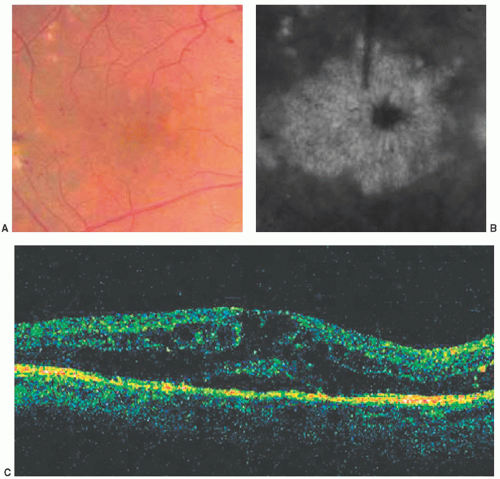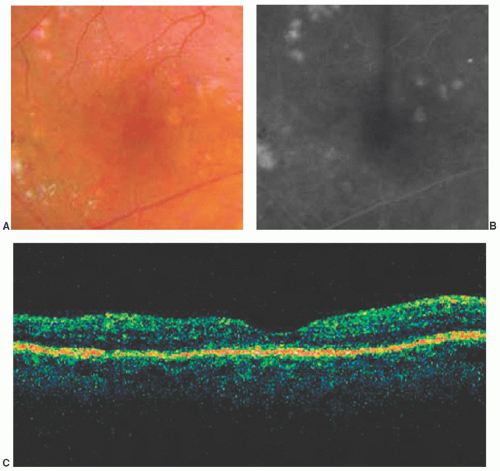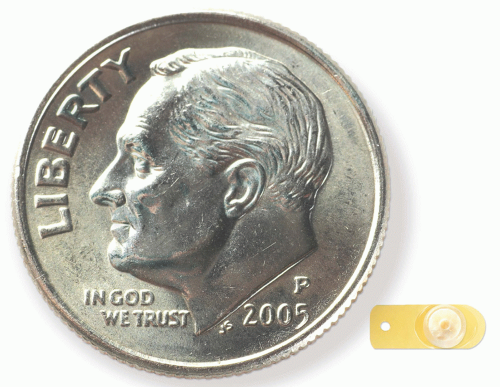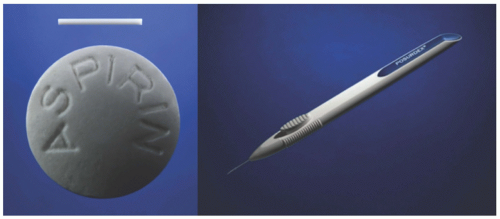Visual acuity (VA) criteria were 20/40 or better for eyes without macular edema and 20/200 or better for those with macular edema. Eyes with macular edema were analyzed separately as one arm of the study.
TABLE 7B.1 Specific Techniques for Scatter (Panretinal) and Focal Photocoagulation in the Early Treatment Diabetic Retinopathy Study | ||||||||||||||||||||||||||||||||||||||||||||||||||||||||||||
|---|---|---|---|---|---|---|---|---|---|---|---|---|---|---|---|---|---|---|---|---|---|---|---|---|---|---|---|---|---|---|---|---|---|---|---|---|---|---|---|---|---|---|---|---|---|---|---|---|---|---|---|---|---|---|---|---|---|---|---|---|
| ||||||||||||||||||||||||||||||||||||||||||||||||||||||||||||
TABLE 7B.2 Definition of Clinically Significant Diabetic Macular Edema | ||||||||
|---|---|---|---|---|---|---|---|---|
| ||||||||
foveal involvement, treatment resulted in a lesser, but significant, benefit (6% for treated eyes vs. 16% untreated at 2 years). In contrast, in eyes with macular edema that did not meet the definition of CSDME, there was no benefit associated with treatment (see Fig. 7B.4).5,6,7
but not statistically significant, difference in visual field scores. Eyes assigned to focal photocoagulation demonstrated slightly more paracentral scotomata on Goldmann visual fields using the I-2 test object.6
treatment remains unknown. Furthermore, the ETDRS used specific treatment guidelines for macular focal photocoagulation. Alternative laser treatment strategies have since been developed, including modified versions of the ETDRS protocol. The relative benefits of different treatment strategies are difficult to assess since a direct comparison with the ETDRS results is not possible.
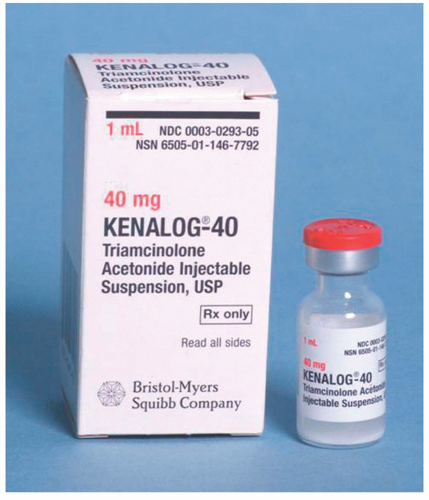 FIGURE 7B.7 Triamcinolone acetonide (Kenalog-40, Bristol-Myers Squibb). (Photograph courtesy of Ronald C. Gentile, MD, New York, NY.) |
clinical trials dedicated to the investigation of diabetic retinopathy. There are currently over a hundred participating clinical sites.15 Its establishment represented a unique paradigm where multiple centers, from academic institutions to private practices, could rapidly organize large trials.
and no expectations for requiring PRP in the subsequent 4 months. Patients with any history of intravitreal steroid treatment or pars plana vitrectomy, or those with recent periocular steroids or photocoagulation treatment were excluded. Also excluded were those with histories of open-angle glaucoma, steroid-induced ocular hypertension that required intervention, and intraocular pressure (IOP) of 25 mmHg or more. Baseline characteristics showed that the DRCR.net study patients were slightly older with better glycemic control compared to the ETDRS and PKC-DRS2 participants.17 Other variables were similar.
certain failure criteria as a fail-safe system. Patients were followed every 4 months, and retreated based on VA and OCT parameters. The primary endpoint was mean VA, and the secondary outcome measure was central subfield retinal thickness. At the time, this DRCR.net study was the first phase III DRS to use the OCT data.
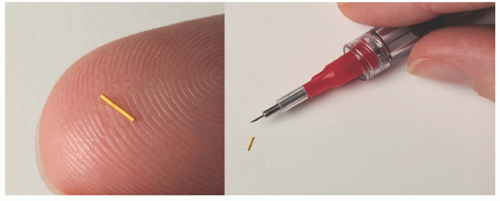 FIGURE 7B.11 Fluocinolone acetonide intravitreous sustained release insert and its injector (Iluvien). |
starting at 16 months and persisting to 2 years the laser group developed the best mean VA (see Fig. 7B.13). At 2 years, the mean ± SD change in VA was +1 ± 17 letters in the laser group, — 2 ± 18 letters in the 1-mg group (p = 0.02), and − 3 ± 22 letters in the 4-mg group (p = 0.002). The number of treatments in each arm was similar. A subgroup analysis of pseudophakic eyes showed that the respective changes in mean visual acuities were + 2 ± 18, +2 ± 17, and −1 ± 19 letters. This analysis was performed because intravitreal steroids are strong risk factors for developing cataract.
observed at one or more visits in 40% of those in the 4-mg group, 20% in the 1-mg group, and 10% in the laser group (all p < 0.001). Cataract surgery was performed in 51% of the 4-mg group, 23% of the 1-mg group, and 13% of the laser group, during the course of the study (p < 0.001). A unique adverse event in this study was intravitreal silicone oil droplets that were found in some eyes due to the use of staked silicone syringes. The protocol was amended to use luer cone syringes instead, which eliminated the problem.
Stay updated, free articles. Join our Telegram channel

Full access? Get Clinical Tree



